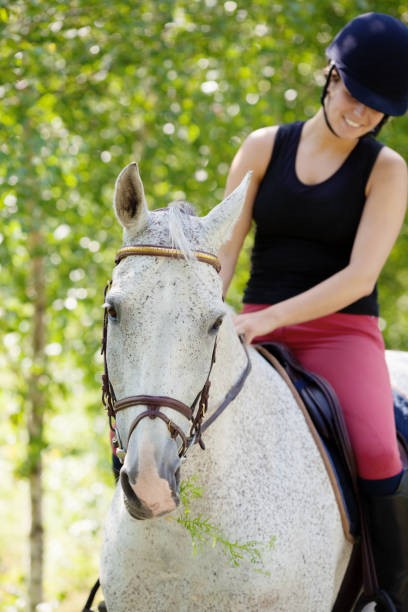4 Steps to overcome rider anxiety
I have always had considerable admiration for those riders who experience high levels of anxiety but push through and do it anyway! However the point is, it doesn’t have to be that way, there are many tried and tested methods that can assist riders to overcome anxiety, the following is an example of the 4 step method I find to be most effective
1, Consider if the issue is technical or psychological
A key point to remember about anxiety is it occurs when the perceived level of challenge is outweighed by the perceived level of skill. If a rider is pushed to perform a task that is too far beyond their capabilities, they are likely to have negative experiences that lead to an increase in anxiety. In this case a rider should receive coaching to assist them in improving thier technique. However, often the rider does actually have the skills to cope with the situation, however due to low level self-efficacy beliefs, the rider feels they are unable to cope with the situation leading to feelings of anxiety. In this scenario a psychological intervention can help.
anxiety occurs when the perceived level of challenge is outweighed by the perceived level of skill
2, Verbalise your concerns
Sometimes riders experience anxiety but are not consciously aware of why. Having an opportunity to verbalise their concerns can enable things to be put in perspective and strategies to be developed for various scenarios, this prevents the brain for running away with itself and catastrophizing.
Sometimes riders experience anxiety but are not consciously aware of why
3, Use imagery and relaxation techniques
To help us navigate our way through our day to day lives we develop something called schema. A schema is a cognitive framework that allows us to make assumptions or generalisations about things, individuals, places etc. If we eat in a restaurant we have never been in before, we would know how to behave because of our restaurant schema. Similarly if we were to get into a car we have never driven before, we would know how to operate it, assuming we have a how to drive schema. If our schema however involves a negative experience, for example a negative hacking schema due to a previous bad experience, then the schema will induce feelings of anxiety. Evolutionarily speaking, this makes a lot of sense, it encourages us to avoid potentially risky situations. However, as previously stated the brain can catastrophize, creating an inappropriate level of anxiety. In my experience one of the most effective tools for altering schema is imagery. Imagery can be combined with relaxation techniques to build associations with more positive states.
4, Use self-talk and anchoring
One extremely effective technique I learned through NLP is anchoring. This is when a particular state is linked to a stimulus. This stimulus could be a pressing of fingers, a piece of music or a key trigger word. An anchor can be established alongside imagery then used in preparation of a potential anxiety inducing situation to gain a more calm, effective state.






0 Comments